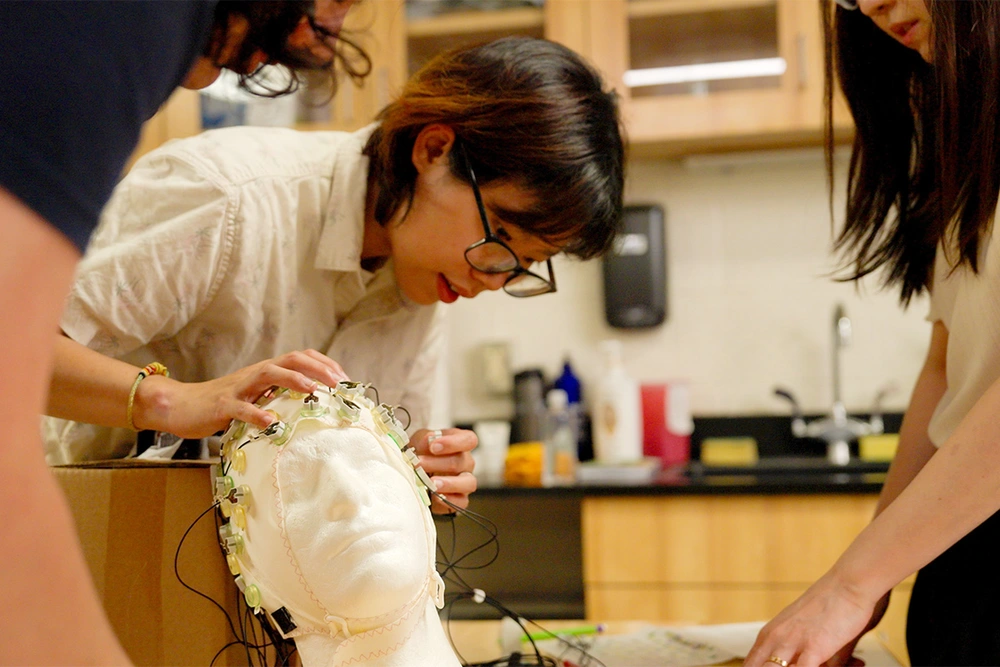Faculty in the News: Manuel Hernandez, professor of health and kinesiology and of bioengineering and an affiliate of the Beckman Institute
October 22, 2025
Image

Caption
Graduate student Maxine He examines a swim cap fitted with electrodes.
Credit
Photo by Virgil Ward
"Today, my laboratory looks more like a scene from a sci-fi film than a psychology research space. Wires snake across tables, sensors lay carefully arranged on trays, and a bucket of ice water sits in the corner, quietly waiting its turn."
Manuel Hernandez is an NSP faculty member and member of the University's department of biomedical and translational sciences at the Carle Illinois College of Medicine. The college is training a new generation of physicians to develop transformative health care solutions by integrating engineering, science and medicine. This experiment is meant to help understand how stress affects the body and mind, and to develop devices that will aid in diagnosis, monitoring and treatment of mental health symptoms, such as anxiety.
"Our brains sometimes respond excessively to social, physical and mental challenges, and even to benign objects. We want to better understand an individual’s responses to such stresses."
Hernandez and lab members have gathered numerous wearable devices, such as caps, wristbands and “smart shirts.” These monitor participants’ brain activity in controlled settings, giving insight into how people respond in real-world scenarios. When a participant enters the room, lab members prepare a studded cap with electrodes to monitor the brain's electrical activity. The electrodes capture the electrical symphony of the brain. Next, they provide a smart shirt which monitors the person’s heart rate, breathing patterns and movement. They also get a wristband on their nondominant hand which will track electrodermal activity, skin temperature and blood volume per pulse. Finally, they attach electromyography sensors to the person’s neck, shoulders, arm and torso to capture muscle tension.
The idea of this work is to make the task of diagnosing and tracking anxiety easier and less costly, and to understand the various physiological responses to stress so that we can better manage it.
This work is supported by the National Center for Supercomputing Applications and a Jump ARCHES endowment through the Health Care Engineering Systems Center at Illinois and the OSF Foundation.
Story Source(s)